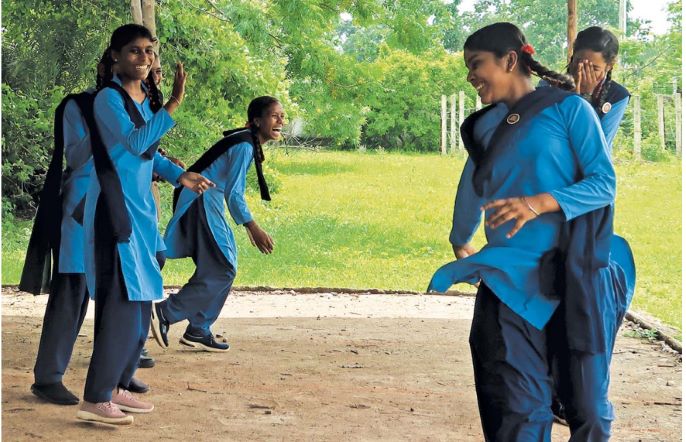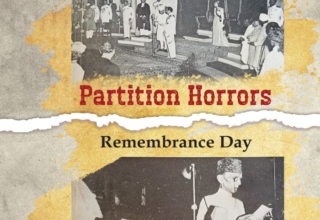
Six years may not be exactly an epoch but if the period has seen unprecedented disruptive transformation and a whole new technological socioeconomic shift, then yes, the just released ASER 2023 ‘Beyond Basics’ by Mumbai-based Pratham Education Foundation, focusing on adolescents in the age group 14-18 is revealing how this important age group in rural India is shaping up. No surprises, the findings of ASER 2023 confirm a sizeable proportion of our youth do not have basic reading and numeracy skills and learning crisis continues to be serious. ASER 2023 ‘Beyond Basics’ was released in New Delhi on January 17, 2024.
The Annual Status of Education Report (ASER) that started in 2005 as a household survey providing nationally representative estimates of enrolment and foundational reading and arithmetic status of children in rural India, in 2017, for the first time exclusively looked at the children in the secondary school age group to gauge the learning status of teens in rural settings of India. The just released ASER 2023 is the second edition in this series after a gap of six years and comes after the world experienced the COVID-19 pandemic that impacted life everywhere and India saw the longest school closures of two years, education, work and services moved to remote and online platforms, necessitating digital access and know-how. This led to widespread penetration of smartphones almost doubling from 38% in 2018 to 75% in 2022 in rural India. Amidst this confusion, the new National Education Policy (NEP) advocating fundamental reforms in school education was released in June 2020.
Prepared in the backdrop of all these disruptive changes, the overall objective of ASER ‘Beyond Basics’ according to its authors is to generate evidence about the kinds of knowledge and abilities that our youth need to acquire, and to share findings with stakeholders across the country to enable evidence to be translated into action. “These years (14-18) are crucial in a young person’s life, these are years when the transition is made to secondary education and career paths are chosen. ASER 2023 is an attempt to shine a spotlight on these years and a qualitative deep dive into knowing the aspirations of this group and the challenges they face. Our hope is this year’ ASER will start a national conversation on their challenges and the way forward so that young people can find their potential in new India,” said Wilima Wadhwa, Director ASER Centre during the release event.
ASER 2023 ‘Beyond Basics’ explored four key domains—Activity, Ability, Awareness and digital aptitude, and Aspirations— and conducted a survey on a sample size of 34,745 teens drawn from 28 districts in 26 states (Andhra Pradesh, Arunachal Pradesh, Assam, Bihar, Chhattisgarh, Gujarat, Haryana, Himachal Pradesh, Jammu and Kashmir, Jharkhand, Karnataka, Kerala, Madhya Pradesh, Maharashtra, Meghalaya, Mizoram, Nagaland, Odisha, Punjab, Rajasthan, Tamil Nadu, Telangana, Tripura, Uttar Pradesh, Uttarakhand, West Bengal). While a district each was chosen from 24 of these states, an additional district from UP and MP was added to the sample. The fieldwork the report report was doen in mid 2023.
Surveyed youth were given five types of tasks: basic reading, math and English abilities; application of basic skills to everyday calculations; reading and understanding written instructions; and financial calculations that need to be done in real life.
The findings of the survey portray learning outcomes have marginally improved. As against 76.6% who could read a Std II level text in 2017, after six years this number is slightly lower at 73.6%. In arithmetic, compared to 39.5% of youth who could do a simple (Std III/IV level) division problem then, the insignificant hike has increased to just 43.3% leaving again a large number of children having progressed through the school system without acquiring these foundational abilities.
Again about 25% of this age group still cannot read a Std II level text fluently in their regional language and more than half struggle with division (3-digit by 1-digit) problems. Only 43.3% were able to do such problems correctly. This skill is usually expected in Std III/IV. Then those who could read sentences in English were 57.3%. Across enrollment categories, females (76%) do better than males (70.9%) in reading a Std II level text in their regional language. In contrast, males do better than their female counterparts in arithmetic and English reading.
Nearly 85% of surveyed youth can measure length using a scale when the starting point is 0 cm. This proportion drops sharply to 39% when the starting point is moved. Overall, close to 50% youth can do other common calculations such as calculating time, adding weights and applying the unitary method. Males do better than females across all everyday calculations. Of the youth who can do subtraction or more, over 60% are able to do the budget task, about 37% can apply a discount, but only about 10% can calculate repayment. Males outperform females across all financial calculation tasks. Those who can do division are more likely to be able to do all these tasks.
A significant find of the report is that 86.8% of 14-18 year olds (from the sample) are enrolled in either school or college and the proportion of youth who are currently not enrolled in school or college rises with age from 3.9% of 14-year-olds to 10.9% of 16-year-olds and 32.6% of 18-year-olds. However, the fear that older children would drop out of school due to Covid turned out to be unfounded. This means more children are getting into secondary education and the youth dividend can be exploited with a clear strategy on this age group. “Like the pathway linking NEP to NIPUN in early grades, similar efforts are needed for translating middle school and secondary school reform ideas into action. Close tracking of outcomes will be key to improvements and eventual success,” writes Rukmini Banerji, CEO Pratham Education Foundation in the report.
New digital economy is now a reality, pushing the smartphone penetration and necessitating digital literacy and skills on mass level. This narrowing of digital divide can provide a scope for taking its advantage to empower the youth. Naturally, the teenagers are an interesting group to study on these parameters. As expected, in ASER 2023, close to 90% of all youth have a smartphone in the household and know how to use it. Almost all youth (90.5%) report having used social media in the reference week, with a slightly higher proportion of males (93.4%) than females (87.8%) reporting doing so. Two thirds report having used it for some education related activity during the reference week, such as watching online videos related to studies, solving doubts, or exchanging notes. Close to 80% of the youth report having used their smartphone to do an entertainment related activity, such as watching a movie or listening to music, during the reference week.
During the survey, in digital tasks such as setting an alarm, browsing for and sharing information, and navigating using Google Maps, 80% could find a specific video on YouTube and among these, nearly 90% can share it with a friend. 70% youth could browse the internet to find the answer to a question and about two thirds can set an alarm for a specific time. A little over a third were able use Google Maps to find the time taken to travel between two points in presence of surveyors.
Along with NEP 2020, the ASER 2023 survey was formulated keeping in mind the cross-section of other Government skill development schemes and programmes such as Pradhan Mantri Gramin Digital Saksharta Abhiyan (PMGDISHA), of the Ministry of Electronics and Information Technology (MeitY) running ‘Digital India’; National Policy for Skill Development and Entrepreneurship, Pradhan Mantri Kaushal Vikas Yojana (PMKVY) Guidelines 4.0; and Draft National Youth Policy, Ministry of Youth Affairs and Sports, 2023.
“Widespread smartphone ownership combined with cheap data presents a huge challenge because of risks of distortion of information. But it is also a huge opportunity for education of the kind that is not offered in schools and colleges. For example: there is a great need for sexual and reproductive health education that can be made available to males and females through ICDS and Primary Health Center channels. Agriculture, or broadly Natural Resource Management, is another subject that is not offered in rural schools and colleges, at least not on the scale it should be,” writes Madhav Chavan, President and member Board of Directors, Pratham Education Foundation. Agriculture employs over 50% of India’s workforce and nearly a quarter of all adolescents in the 14-18 age group also work on agriculture while being enrolled in schools or colleges. In this context the need to formally train our children and youth in advanced skills and knowledge of agriculture, fisheries, forestry, etc. that are traditionally handed down in families should be obvious. Issues of natural resource management are the issues of environment and climate.
“One of the consequences of universal elementary education is that it raises student and family aspirations for an academic pathway leading to white collar jobs. Not only does this lead to cutthroat competition for getting into colleges, but it also closes young minds to the possibility of exploring other livelihood pathways for progress. The responsibility for creating a new highway for transition from school to work lies not only on the education system but also with industry. Developing a variety of effective paths to help young people find productive livelihoods so that they can live fruitful lives is one of the major challenges facing India today,” adds Banerji as the way forward as report hopes to generate a conversation around this age group.










